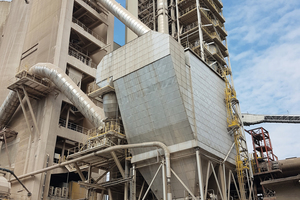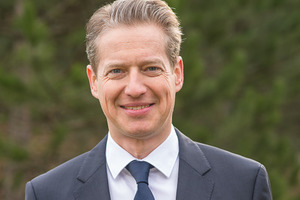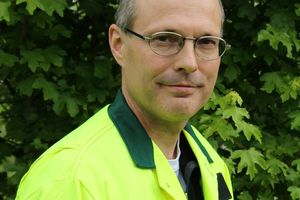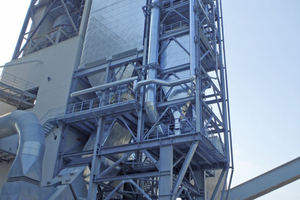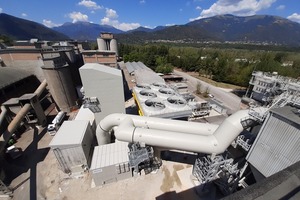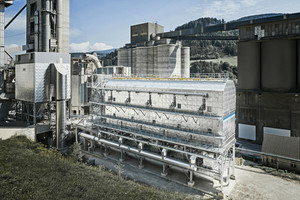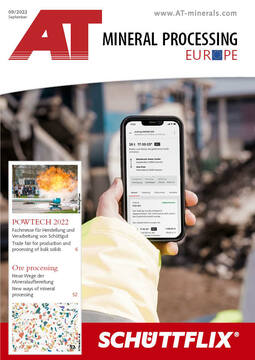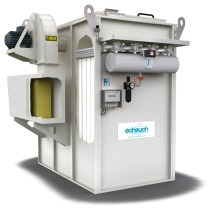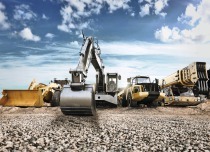The cement industry puts its trust in Scheuch technologies for exhaust gas cleaning
At Scheuch, almost six decades’ worth of experience in the environmental technology sector goes into all its systems and projects. The company has become well known worldwide for its groundbreaking innovations in the field of dust filtration. Lafarge Mannersdorf was already the birthplace for Scheuch’s emc technology back in 2005, when its 10-m-long filter bags revolutionized the filtration market. A few years later, Scheuch then went on to forge new paths away from the filtration sector. With emissions directives in the cement industry becoming ever more stringent, new solutions for exhaust gas cleaning were in high demand. Scheuch invested huge amounts in research and development as well as in pilot systems. The time to put its work in this new sector to the test in practice came in 2012 when Scheuch put the world’s first semi-dust scr system into operation at the Lafarge cement plant in Mannersdorf, Lower Austria.
SCR – selective catalytic reduction
As a means of reducing pollutants such as nitrogen oxides, ammonia and organic compounds, Scheuch optimized its selective catalytic reduction (SCR) technology and opened it up to the cement industry, too. The scr system at Lafarge was designed for an NOx limit value of 200 mg/Nm³, enabling significant reductions in the overall emissions to be achieved. This pilot was a milestone for us all, report Dr Ehrenberg and Bernhard Köck from Lafarge Zementwerke GmbH.
“In Germany, all coal-fired power stations had SCR, but the cement industry had not reached this technological standard at this time. The cement industry was keen to see the technology developed for its sector, and in Germany and Austria, there were also political ambitions to reduce emission values. In Austria, we were the first and largest cement plant to start a pilot project to this end, working together with Scheuch,” says Dr Christopher Ehrenberg, Industrial Manager CE at Lafarge Zementwerke GmbH. “For the plant and all employees, this was a great achievement. The move was also very well received by our stakeholders, who were pleased to see that the Mannersdorf site was using a new technology to reduce nitrogen oxides.”
“We discussed the processes with our suppliers. Scheuch was always one of the most innovative partners – something that was pretty rare on the world stage. Scheuch really committed to the project and developed a pilot,” adds Bernhard Köck, Optimization Manager (for the environment, quality and process) at Lafarge. “Working with Scheuch was nothing but a positive experience, as we have come to expect from them. Each party regularly had the opportunity to share their ideas and experience and both sides learnt a great deal from each other. The system continues to run flawlessly to this day. The only thing that has been changed is the catalysts. This pilot was a milestone for us all. Despite a few minor problems, Mannersdorf has proven that the technology works. SCR was the starting point for us to embed consideration for the environment across the Group and among our employees. It was an important building block that showed we are doing our bit for the environment and are developing in the right direction.”
Air technology specialist Scheuch developed customized systems according to the cement manufacturer’s production process, available space, emission targets and other strategies. However, the objective of Scheuch and its customers was always the same: to reduce exhaust gas emissions to the greatest possible degree. Depending on the system configuration, customers can choose from a high-dust, semi-dust or low-dust scr system for achieving exceptionally low nitrogen oxide emission values. While the rotary kilns of the semi-dust or high-dust scr systems offer the optimum exhaust gas temperature for NOx reduction, in low-dust scr systems, the exhaust gas temperature has to be raised.
Further successful emission reduction systems in the cement industry
Thanks to the experience gained with the first reference project in Mannersdorf, further SCR technology developments were able to be realized and revolutionized, resulting in further successful high-dust scr systems from Scheuch – including for Heidelberg Cement AG in Germany in 2018 (Geseke plant) and Dyckerhoff GmbH in 2019 (Göllheim plant). Scheuch was able to provide the right solution for both cement manufacturers.
A low-dust scr system was brought into operation at Industria Cementi Giovanni Rossi in Italy in 2021. What makes this solution so special is the fact that a large amount of the energy that must be used for heating can be recovered using the heat exchangers integrated in the SCR reactor. The advantage of this type of system over the high-dust scr system is that relatively low catalyst volumes can be used thanks to the dust-free exhaust gas, enabling long service lives to be achieved.
Deconox® – a patented process combining regenerative thermal oxidation (RTO) and integrated SCR application
Deconox®, a patented process for combined NOx reduction and separation of organic compounds, celebrated its premiere at Kirchdorfer Zementwerk Hofmann GmbH in Austria in 2016. In this process, energy from exhaust air containing pollutants is used to break down other pollutants such as nitrogen oxides and organic compounds. This results in significantly lower emissions in industrial environments and prevents unpleasant odours. As the residual energy can also be fed back into the production process or recycled in other ways, this procedure also makes a huge contribution towards energy-saving measures. Deconox® combines regenerative thermal oxidation (RTO) with a low-dust scr – two proven technologies in a single system.
Xmercury mercury separation
In 2017, W&P Zement GmbH in Austria had Scheuch install an RTO system, with the option to expand it to include deconox®. The cement company had already placed its trust in Scheuch’s solutions expertise back in 2015 when it incorporated its xmercury mercury separation process into its system, allowing it to reduce its mercury emissions by 90 %.
Regenox – tailored to the customer
Scheuch developed the regenox process in 2020 for Märker Zement GmbH in Germany. For this system too, Scheuch catered to the special needs and requirements of the cement manufacturer. The starting point was the proven deconox® process which, in the first expansion stage, was designed as regenox for the first time. With regenox, the afterburning process is not implemented yet, but is included in the design. This state-of-the-art system enables the applicable, very low emissions limits to be reliably and sustainably met. With the regenox system, Märker Zement GmbH has the flexibility to expand this solution into a full deconox® system at some point in the future.
Through close collaboration and ongoing communication with customers, what began in 2012 with the first semi-dust scr system at Lafarge in Mannersdorf has been developed over the past decade into a broad portfolio of exhaust gas cleaning processes for the industrial minerals industry. Today, Scheuch is able to offer integrated and turnkey system solutions for exhaust gas cleaning to all its customers, across all sectors of the primary and building materials industry and tailored to their individual needs. All processes developed by Scheuch have proven their exceptional value in practical applications.
Hall 4, stand 111

